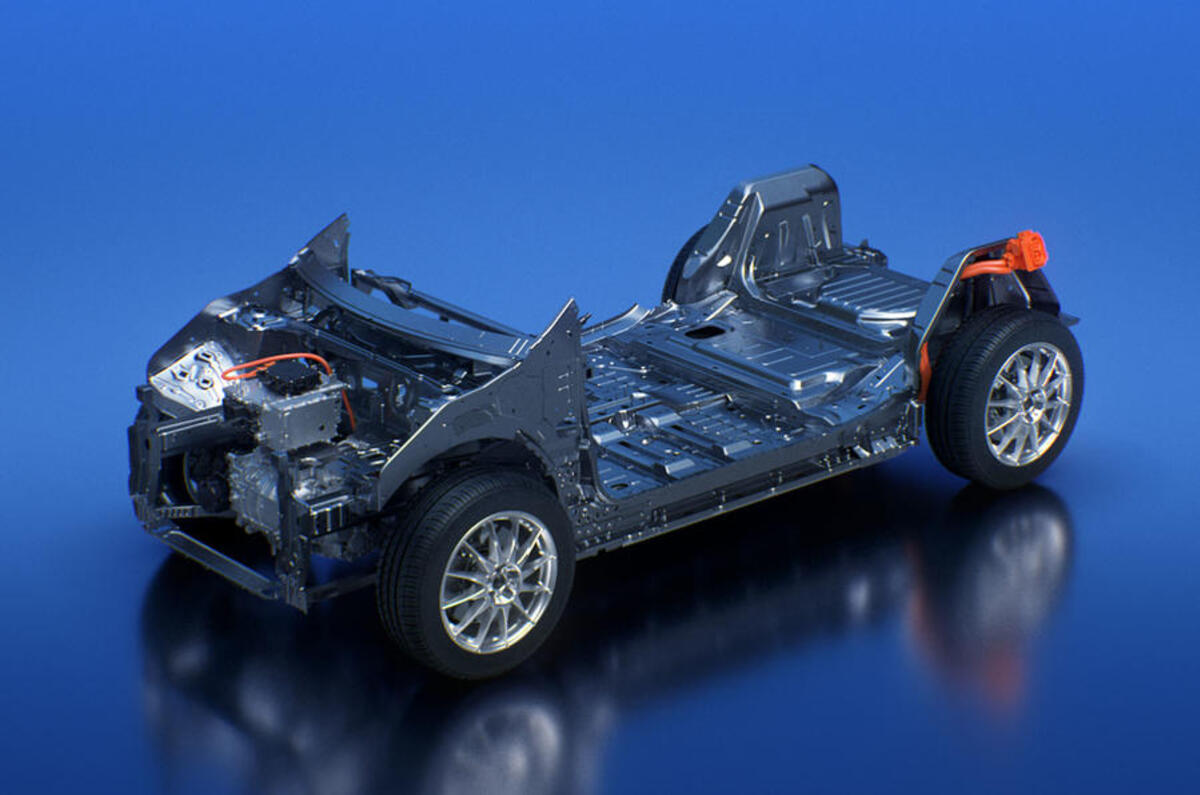Stellantis is targeting a 50% weight reduction in batteries by 2030 in a bid to lighten electric cars nearer to their combustion-engined equivalents.
“The battery today is just too heavy; the vehicle is too heavy. We shouldn’t be going backwards,” said Ned Curic, head of engineering and technology, at the opening of the company’s new Mirafiori battery technology centre in Turin, Italy.
Curic said the company’s goal was to halve the weight of the battery pack through the introduction of new lightweight battery technologies and more efficient cell packaging.
Stellantis earlier this year invested in Silicon Valley company Lytten, which is developing lighter lithium-sulphur batteries. As well as reducing weight, these cut costs and carbon emissions by using less exotic materials than lithium ion batteries.
Curic also cited sodium ion batteries as another potential alternative. Sodium ion is touted as a much cheaper option and is being developed by Chinese battery makers such as CATL.
Just how heavy EV batteries are today was revealed in a recent teardown of the BYD Seal saloon by Swiss bank UBS as part of a report in battery costs. The lithium-iron-phosphate (LFP) battery pack in the standard 62kWh Seal accounted for 470kg of the car’s overall 1941kg weight.
More expensive nickel manganese cobalt (NMC) batteries are lighter and more energy-dense, but the 60kWh pack in the Renault Mégane E-Tech Electric still weighs 394kg of the total 1783kg, UBS reported.
The new Mirafiori facility will enable Stellantis to design, develop and test battery packs, modules, high-voltage cells and software for upcoming models from Alfa Romeo, Citroën, Fiat, Peugeot, Vauxhall and more.
Stellantis has spent €40 million (£34.3m) developing the facility, which repurposes a section of a former Fiat factory. It has 32 climatic test chambers, enabling it to test up to 47 battery packs in parallel.




Join the debate
Add your comment
Is it just the battery that makes EVs heavy or are there other things that contribute? Sure the battery packs are heavy but take the Megane E-Tech example above, remove the battery and the remaining car still weighs 1400kg. A 1.5 TSI Golf comes in about 1300kg despite having an engine, exhaust, gearbox and fuel tank. I get that as a car gains weight, other components need to be stronger and therefore likely heavier, but there still seems to be quite a gap between the two. Is there extra reinforcement to protect the battery in an accident? Larger cooling system to keep the battery cool?
Very good point. Today we are told the new Peugeot 3008 will weigh from 2100kg, with a 500 kg battery, so even with no battery, 1600kg is a lot heavier than many bigger ICE cars. And on this basis, if PSA halved the weight of the battery, the 3008 in the future would still be around 1850kg. Surely much heavier than any comparible ICE machine
Looks like they've been listening to Colin Chapman!
Yes yes Colin Chapman the Father of lightness in a Sportscar,a car that was that well built or reliable, was well advertised, was in a few hit Tv series,oh! and a winning F1 team way way way back in the mists of time, cars of the future won't be that light no matter what developes in the next few years, it's more how cars will be suspended,how suspensions will be made to cope with the battery weight, where the batteries ar integrated into the car's chassis and body,of course you can't beat gravity, you will always feel it.
But.....they won't need to make suspensions that cope better with heavy batteries if they make the batteries lighter in the first place, will they?
And there won't be an EV sport car as light as an Elan either.
Well, obviously not. I assume you are referring to the original Elan from the 60s/70s. A car built in a time before safety legislation, which made cars both safer and much heavier. The only way you are going to get a modern car as light as an Elan these days is if you buy something like a Caterham.
two seater car, no boot as such, so not even a shopper car or a commuter car, yes it's light, but it's not really family transport port, it's a Weekend blast round a Track or your favourite journey.
And how is a Lotus Elan any different?
What would be even better is just making things lighter, surely? Rather than developing technology for a problem that doesn't need to exist?
In an ideal world, yes. The problem that most people keep forgetting is all the safety equipment in modern cars, designed to keep occupants alive and required by law, weighs a huge amount. Perhaps car makers need to start dedicating engineers to the question of how to make all the safety stuff lighter?